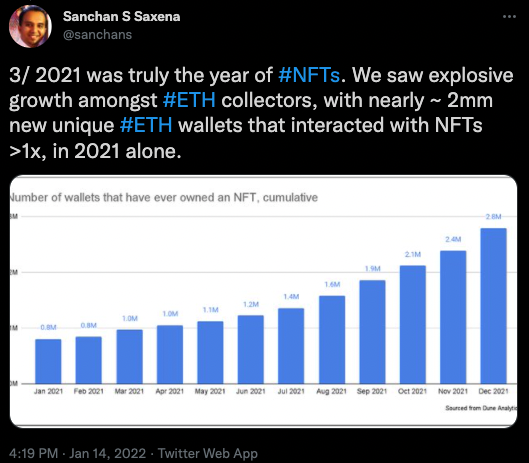As Ethereum commemorates its ninth anniversary, it is opportune to reflect on its transformative journey and the milestones that have solidified its position as a foundational element in the cryptocurrency ecosystem. Launched on July 30, 2015, by Vitalik Buterin and a team of pioneering developers, Ethereum introduced the concept of smart contracts, enabling the creation of dApps on its platform. This innovation has catalyzed advancements across various sectors, including finance, supply chain management, and gaming.
1. The Genesis of Ethereum
Ethereum’s journey commenced with the publication of its whitepaper and yellow paper by Vitalik Buterin and Gavin Wood in 2013 and 2014, respectively. These foundational documents outlined the conceptual and technical frameworks for the Ethereum ecosystem, paving the way for its public launch. The Ethereum network officially debuted with the mining of its Genesis block on July 30, 2015. Ether (ETH), the network’s native token, was distributed to contributors of the project’s ICO, marking the advent of a new era in blockchain technology.
2. Significant Milestones in Ethereum’s Development
2.1. The DAO Hack (2016)
One of the most pivotal events in Ethereum’s history was the DAO hack in 2016, during which $50 million worth of Ether was stolen. This incident precipitated a contentious hard fork, resulting in the bifurcation of Ethereum into Ethereum (ETH) and Ethereum Classic (ETC). The fork aimed to recover the lost funds, with over 85% of ETH holders voting in favor. Despite the controversy, this event underscored the resilience and adaptability of the Ethereum community.
2.2. The ICO Boom (2017)
The ICO boom of 2017 was a critical juncture for Ethereum, as it became the preferred platform for launching new blockchain projects. ICOs raised billions of dollars, significantly enhancing Ethereum’s adoption and establishing it as an essential player in the crypto ecosystem. This period witnessed a surge in token sales, contributing to the rapid expansion and development of the Ethereum network.
2.3. The DeFi Explosion (2020)
In 2020, the DeFi sector experienced exponential growth, with Ethereum at its core. DeFi applications enable users to access traditional financial services such as borrowing, lending, trading, and investing in a decentralized and transparent manner. This boom was driven by Ethereum’s programmability, facilitating the creation of a broad array of DeFi applications and further solidifying its leading position in the blockchain space.

2.4. Ethereum 2.0 (2020)
A significant milestone was the launch of Ethereum 2.0 in December 2020, marking the commencement of Ethereum’s transition from a PoW to a PoS consensus mechanism. This shift aimed to enhance the network’s scalability, security, and sustainability. The Beacon Chain, a vital component of Ethereum 2.0, introduced PoS to the Ethereum ecosystem, laying the foundation for future upgrades.

2.5. EIP-1559 Upgrade (2021)
In August 2021, Ethereum implemented the EIP-1559 upgrade, which introduced a mechanism to burn a portion of transaction fees. This change aimed to mitigate the issuance of new Ether tokens and promote a more sustainable monetary policy. The upgrade proved effective, with millions of Ether burned, contributing to a deflationary effect on the network.

2.6. The Emergence of NFTs (2021)
Ethereum was instrumental in the creation and adoption of NFTs. The introduction of the ERC-721 standard facilitated the creation of unique digital assets, leading to a surge in the NFT market. This innovation enabled developers to create a diverse range of digital assets, including artwork and virtual land, each with distinct significance and identity.

The popularity of NFTs skyrocketed in 2021, with celebrities and artists joining the trend, further driving widespread adoption.

2.7. The Merge and Shapella Upgrades (2022-2023)
The Merge, which occurred in September 2022, marked Ethereum’s anticipated transition from PoW to PoS. This upgrade involved the integration of the Beacon Chain into the Ethereum mainnet. Following the Merge, the Shapella upgrades in April 2023 enabled validators to withdraw their staked Ether for the first time. These upgrades enhanced the perception of Ethereum 2.0’s staking mechanism, making it more appealing to validators and stakers.

3. Insights and Future Prospects
Reflecting on Ethereum’s nine-year trajectory, industry leaders emphasize its transformative impact on the blockchain landscape. Ethereum’s introduction of smart contracts and dApps has paved the way for numerous innovations across various sectors, including finance and gaming.
Despite significant progress, the platform continues to grapple with challenges in usability and scalability. High gas fees and slow transaction speeds, especially during peak times, are notable hurdles that stem from the network’s limited scalability. The transition to Ethereum 2.0 and adopting Layer-2 solutions, such as rollups and sidechains, are steps to address these concerns. These solutions process transactions off-chain and settle them on-chain, significantly reducing congestion and lowering transaction costs, making Ethereum more accessible.

Despite these challenges, Ethereum’s community remains resilient and dedicated to driving mainstream acceptance and adoption. The shift to a PoS consensus mechanism is seen as a critical step in making the network more sustainable and appealing to a broader audience. Additionally, the rise of decentralized DeFi and NFTs has brought Ethereum into the mainstream spotlight, showcasing its potential to revolutionize various industries. As Ethereum embarks on its second decade, its ability to adapt and innovate has positioned it as a leader in decentralized space.
Vitalik Buterin and other key figures envision a future where Ethereum is scalable, secure, and user-friendly, enabling the creation of a wide array of decentralized applications that can compete with traditional systems. With ongoing advancements and a strong community, Ethereum is poised to remain a dominant force in the evolving landscape of blockchain technology.

Ethereum’s nine-year journey is a testament to its transformative potential and enduring impact on the blockchain industry. From its inception to its recent upgrades, Ethereum has consistently pushed the boundaries of what is possible, setting the stage for a future where decentralized applications and smart contracts play a central role in our digital lives.
The information provided in this article is for reference only and should not be taken as investment advice. All investment decisions should be based on thorough research and personal evaluation.





